Commercializing Tactical Communication Sites
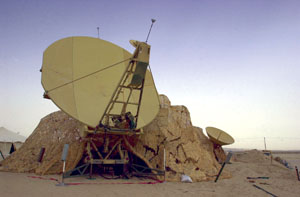 |
Tactical communications gear used during military operations in Southwest Asia, such as this satellite equipment, is being replaced by private contractors to free soldiers and more mobile military equipment for forward redeployment. |
The very situations that call for rapidly deployable military communications gear also mandate commercial equipment for long-term theater operations. A fast, agile, mobile military requires communications equipment that can be quick to move and quick to set up. However, in exchange for this tactical mobility, these equipment components are more vulnerable to the elements. This makes any stay for extended periods hard on the equipment.
When command, control, communications and computers (C4) sites are needed for the long haul, more permanent—strategic—fixtures are required. Personnel at the Enterprise Systems Technology Activity, Network Enterprise Technology Command (NETCOM), Fort Huachuca, Arizona, are a driving force behind commercialization of these tactical communication sites needed for the long haul.
Commercialization could be viewed as building up a temporary communication/data transfer site into a permanent fixture with the needed C4 capabilities to accomplish the mission. The initial phase of any C4 site is tactical: the soldier goes in, secures the area and sets up a tactical C4 site. After senior leaders determine there is a need for a more permanent fixture, NETCOM’s Information Technology Integration Directorate (ITID) comes into play.
ITID brings in civilian contractors to provide the same basic functions as the military’s tactical unit, but instead of having all the equipment on a little van or in a tent vulnerable to the environment, the gear is in a permanent structure, explains Peggy Henderson, ITID director.
“We have completed several sites in Southwest Asia,” notes Sherry Garcia, ITID Special Projects and Systems Support Division chief. “We’re working at putting additional commercialized sites into some of the forward operating bases there, but we are still in the early stages.”
Contracting out C4 capabilities takes time—not because it is such a long and hard process, but because priorities change and sometimes the mission changes. When that happens, the requirements for any given site can alter, requiring additional or different equipment to perform a different or expanded C4 function. “Commercialization is an ongoing process that can change almost daily,” Henderson says.
“Flexibility is the key thing for a wartime requirement,” she continues. “Sometimes this flexibility includes redirecting parts from shipments from one site to another because of a change in site priority. Capabilities that were not needed at one location change to a ‘must have’ requirement at another, and using items already warehoused in country is the quickest way to get that requirement established. Getting additional equipment bought and shipped takes time, especially if the equipment is needed in a remote location,” she concludes.
Commercialization starts when the need for permanent assets is determined and the associated tactical units are needed elsewhere. “We must free up our soldiers for future missions, and the only way to do that is to get the commercialization in place so tactical signal units can redeploy and also get necessary maintenance on their tactical equipment,” Henderson offers.
The transition from tactical to commercial does not take place all at once, Henderson relates. “As the team commercializes different services, then the tactical assets associated with that service can be returned to CONUS [continental United States] for necessary maintenance and relocated to where the assets are needed. Because of the wide temperature variations and the wind storms, the equipment that goes back isn’t always in the best of shape,” she emphasizes.
These commercialization efforts are not strictly an Army activity. NETCOM has helped other services and coalition forces. “We went into Djibouti and supported the Marines, commercializing one of their sites,” Henderson relates.
To begin the process, ITID brings in a team of contractors and other civilians to evaluate the site requirements. “We start out with a site survey,” Garcia says. “The team normally includes an engineer, a project manager and an installer. These people get out there to talk to the signal unit on the ground. They get an idea of what the terrain looks like—an important element in line-of-site communications—and what the existing buildings look like. Some locations in Afghanistan have bombed-out buildings with little to work from. The team also checks to see what power and other services are available. While at the site, the team also gets a general idea of the units that are on the installation, their composition and their mission,” she offers.
After the site survey is completed and the requirements are determined, engineers develop a systems design plan, Henderson explains. “The Operational Engineering Directorate of NETCOM provides the majority of the engineering support for our efforts in Afghanistan,” she declares.
“As soon as the engineering plan is done, we have to order all the equipment, and that is challenging because we send equipment to remote and often hostile environments,” Henderson continues. “We are talking about whole suites of equipment. Any given site could have between 20 to 30 of what we call lists of material.” Once acquired, the equipment is sent to a staging area in Virginia.
“When approximately 80 percent of a given list of material is received in a staging area it then is palletized and sent, for the most part via commercial air, to a commercial airport,” Henderson explains. ITID has agreements with companies in the area of responsibility that clear it through customs and deliver right to the site. “Our folks receive the equipment, inventory and store it and then begin pulling from it as they do the installation,” she reports.
Ensuring that the gear arrives there is only half the job. “Frequently, the entire shipment for one site may not fit on one plane because of the weight,” Henderson observes. “We try not to get anything separated, but it is a challenge.”
Shipping equipment and supplies is a very complicated process and takes lots of coordination and tracking to make sure everything gets to where it is supposed to be. Garcia notes that, last year, ITID shipped more than 60 tons of equipment for commercialization. “A lot of the weight was huge cable reels, which are very heavy,” she adds.
Putting everything together once it is in theater is a different story. “Our job has grown so much, and we have a limited number of people from ITID in theater, so we are often supplemented by the military,” Garcia notes.
For jobs such as digging trenches for cable, the site manager uses local hires who sometimes work in an unusual fashion. “As a matter of fact, while in Afghanistan, I saw [locally hired workers] digging a 20-foot trench with their hands,” Garcia relates. “There were about a dozen of them, and they would take turns digging.
“We hire laborers to offload supplies from our trucks. We provide forklifts, but at times they don’t want to use the forklift, so you may see 20 people lifting a pallet off the truck instead of using the tools we provide,” she says.
“We take whatever building is designated and build the communications from the ground up. We’re digging trenches, laying cable, pulling wire for telephones and computers,” Garcia states.
The working conditions in Afghanistan were not always the best, as Henderson relates. “In the beginning, we took our own portable rollaway beds because we weren’t sure whether there was a place to sleep. When we first arrived in country it was not unusual to see people sleeping on the ground. If our guys were lucky, they had a tent with cots to stay in, and if they were real lucky, the tent was dedicated to our folks. Even things like getting bottled water to drink were hard at first. Everything had to be shipped to the site. There were no 7-Elevens,” she offers.
“It is also a morale thing,” Garcia adds. “The civilians over there aren’t remembered as much as the soldiers. Our guys are there almost semi-permanently; some have been there for almost two years. They come home, but they go back after a short break. Some people don’t even realize that we have civilians over there doing that work.”
Edward Griswold is the operation Enduring Freedom project manager, Enterprise Systems Technology Activity, Network Enterprise Technology Command, Fort Huachuca, Arizona.
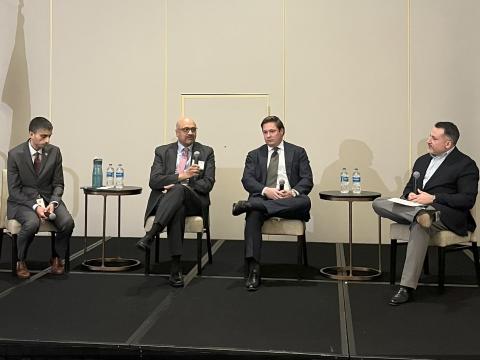
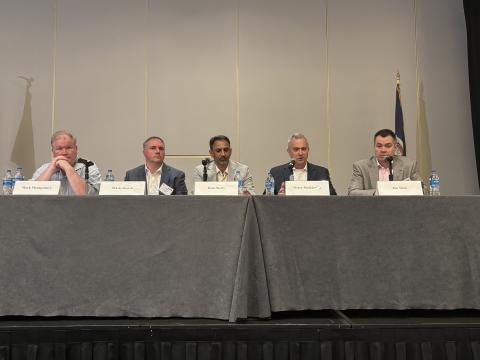
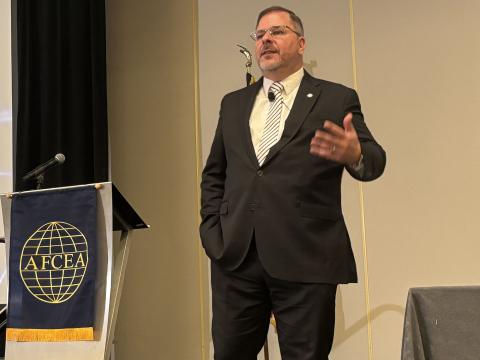
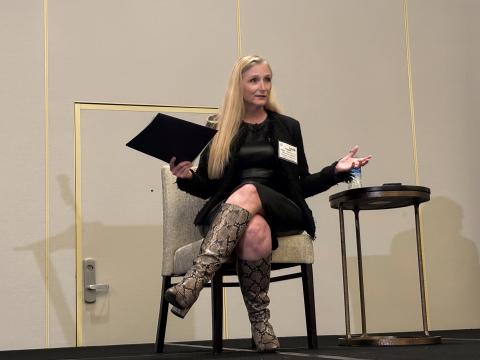
Comments